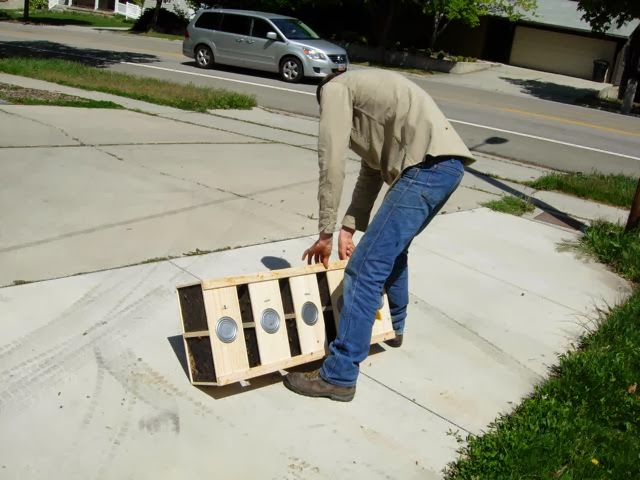What is a “Nuc?”
The term “Nuc” is short for Hive Nucleus. It is bees and a queen on 5 frames used as a starter colony. The 5 deep frames contain worker bees, drawn out comb, a laying queen, eggs, larvae, and sealed and emerging brood.
Nucs are usually kept in a half-sized deep box called a nuc box, which contains 5 frames instead of the standard 10. Below from left to right, there is one standard 10-frame box, 1 nuc box with a lid, and 1 nuc box with lid removed.
Nucs are formed either by splitting an existing colony or by installing a package into a nuc box and nursing it along for a few months.
Nucs do not include the box, only the frames with bees. Nucs are often transferred into a deep hive body box when they outgrow their nuc box (or at purchase).
Below we are transferring nucs from nuc box to deep hive body box at our beekeeping class. The beekeeper carefully lifts frames from the nuc box with the hive tool.
See lots of bees working hard on drawn comb.
Then he gently places frames from the nuc into the new deep hive body box.
The 5 frames from a nuc are placed in the center of the 10-frame hive body box, with 2-3 new frames on the outside.
Why buy nucs?
- The price difference between packages and nucs is only $25 when you add everything up.
- When packages arrive in Utah from sunny California, it often rains for a few weeks after. The lack of flight time and nectar flow causes the queen to temporarily stop laying eggs. This stunts the colony’s growth and beekeepers may need to feed the bees.
- We generally sell our nucs later in the spring, after the coldest weather. We get your bees through this difficult transition and sell you a colony, which has been inspected for a good queen and brood.
- We take the risk and get the bees started. You are less likely to waste money and time, and more likely to have a positive first experience.
- We raise packages into nucs right here in Utah. They have a chance to become acclimatized to Utah weather patterns before you buy them. (Some of our competitors bring in CA packages. Then the weather risk is still involved.)
Sometimes nucs get a bad reputation for being a means of transferring disease. This can be the case when starting bees on old frames with old foundation. The wax cells can be storage places for disease. However, we start all of our bees on new frames and new foundation to eliminate this concern.














